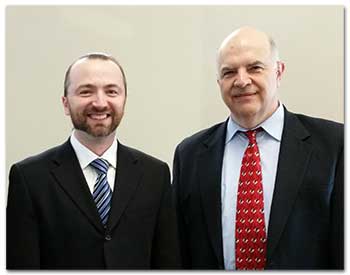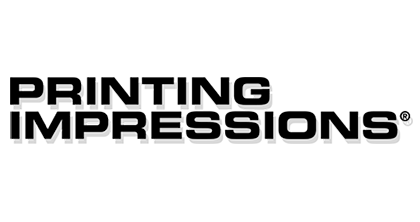
Authors: Slava Apel and Dr. Joe Webb
Printing technology expert Slava Apel and print industry consultant and futurist Dr. Joe Webb present their experiences, research, and practical perspectives about how printers can use cloud computing to improve their operations and customer experiences. These technologies can improve business strategy implementation and have a positive effect on the market value and investment attractiveness of a printing enterprise. Cloud computing is an enabling technology that offers opportunities for workflow flexibility and increased productivity. This cloud production guide stresses the best practices for the assessment and planning of cloud migration and implementation includes a plain-language overview of cloud computing concepts and business applications. Also discussed are the varieties of cloud services, cloud technology and software vendors, differences between cloud, SaaS, or enterprise deployments, and the range of price points and contracts for cloud software. The book pays special attention to the importance of training. The authors explore the risks and alternatives for the critical step of integrating the cloud with current operations and planning the migration of current systems to cloud computing.

| Foreword: Welcome to the Cloud A Brief History of the Cloud Defining the Cloud Three Ways of Using the Cloud The Time Is Now How This Book Is Organized For More Information |
Chapter 1: What Is the Cloud? Cloud Drivers Cloud Case #1 The Cloud for Print Businesses Three Kinds of Clouds -Private Cloud -Public Cloud -Hybrid Cloud Comparing Clouds Onward |
Chapter 2. What Are Printers’ Perceptions of the Cloud? … Chapter 3. What Are the Benefits of Cloud Computing? … Chapter 4. What Applications Are in the Cloud? … Chapter 5. What Is the Cloud Migration Process? … Chapter 6. The Effects of Cloud Migration on Business Valuation and Succession … Chapter 7. Legal Ramifications of Cloud Migration |
Choosing a Guide/Sherpa/Consultant/Cloud services brokers.
You have choices. Take our recommendations from the book and approach every company yourself. You can hire an IT minded individual to research for you and help you with the migration. You can teach your team to understand how to migrate to the cloud and how to choose a right vendor for each segment.
OR you can outsource it to a Guide/Sherpa/Consultant.
Consultants have done the conversion and migration many times prior to speaking to you so they can guide you for better pricing, better connectivity, better uptime and better service level agreements.
For example, on a recent project, a client requested pricing for cloud storage. We provided the same specifications to three providers, whose responses ranged from free to $50K!
Could a range like this really be? Finally, are you straight up concerned that you don’t know what you don’t know and that you will choose the “wrong” provider?
A consultant can guide you through Performance, architectures, disaster recovery plans, vendors, upgrades, security, data location, encryption in transit, regulatory compliance, documentation, support, pricing.
Instead of setting up meetings with 100s of vendors and sitting through 300s of hours of demonstrations and 600s of hours of their follow ups and presenting the findings to the management team (that’s a lot of coffee and boardroom meetings), we recommend using a Guide/Sherpa/Consultant/Cloud services broker that will do all of the homework to you and give you just 3 options instead of 100. You still will end up with the final decision, but you will save 1000s of hours.
It is the Guide/Sherpa/Consultant/Cloud services broker’s (S/G/C/C) job to ask you the right questions, to figure out the requirements and to present only relevant cloud options to participate in the evaluation and serve as the general program manager for your company. It is Guide/Sherpa/Consultant/Cloud services brokers’ responsibility to set the schedule and deadlines, find you the best deal and make sure that the offering properly fits into your businesses culture.
The S/G/C/C/ knows what negotiation tactics are suitable for your pricing requirements and how to position your request to fit into the best pricing grid.
The compensation to S/G/C/C/ is split between different methods:
- Vendors paying them a commission
- Retainer plus hourly work
- Discovery plus transition plus maintenance fees
- A difference of savings success fee
- A one-time lump sum fee based on scope
- Etc
We recommend engaging a large, reputable and focused firm that understands printing industry.
Media Launch
Press Briefing / Media Launch of Cloud Production Book
The book was released at the Print17 trade show in Chicago, Illinois on September 7th, 2017. Both authors, Slava Apel and Dr. Joe Webb, were in attendance to say a few words and sign the books as they came off the Konica Minolta presses on the trade show floor. See video for details.

Cloud Production News
Are Your Ready to Migrate to Cloud Computing?
A new and forward-looking book “Cloud Production” is debuting at PRINT 17. This guide was selected by Konica Minolta (Booth 2031) to highlight the importance of these technologies, and to showcase the company’s printing and finishing capabilities. Konica Minolta is making the book available for free to show attendees… Read More >
Watch our Cloud Production Webinar
Ten Reasons to Use Cloud Technology in Your Printing Business
Learn what tools are available to printers for migrating to the cloud. Seminar by Dr. Joe Webb, Slava Apel and Scott Prince of http://www.cloudproduction.com

